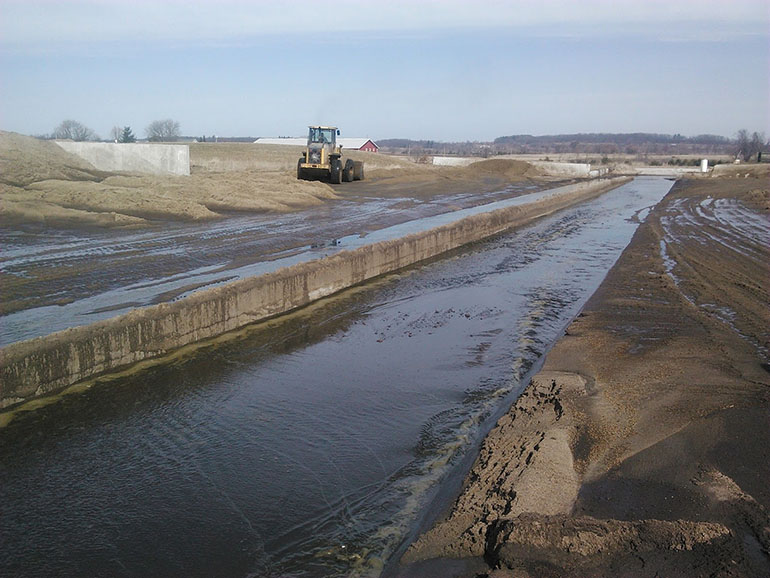Sand settling lanes and Stokes’ law
April 13, 2016

Many dairy farms have turned to using sand as a clean, comfortable bedding that can promote conditions for low bacteria counts for mastitis control.
As Daniel Andersen, aka Dr. Manure wrote in a previous “Manure Scoop” blog, one of the best ways to avoid sand-laden manure from impacting soil texture is a good sand recovery system.
His April 9 “Manure Scoop” blog explains the science behind properly designed sand settling lanes so dairy farmers can both recover used sand and yet allow use of the manure for field application.
Andersen writes: “What is a sand settling lane? Well just like the name makes it sound, it’s a lane (think land like a bowling alley lane) where we want sand being carried in our water-manure-sand mixture to settle out. By settle out, I mean the sand hits the bottom and it stays in the lane where it can later be scooped out. The sand that is scooped out is then laid out in windrows and turned a few times to facilitate drying of the sand.
“To be successful and make good sand bedding, we want to recover as much of the sand as possible, but not the organic matter in the manure.”
Andersen explains the science of the settling lane, with the idea of using gravity and density differences to drive the separation of sand and manure. Stokes’ law, with the equation V=((ρp-ρw )/18μ)*gD^2, is often used to describe this.
Where V is the rate settling velocity of a particle (m/s), ρp and ρw are the densities of the particle and the density of water respectively (kg/m3), µ is the viscosity of the fluid (kg/m-s), g is the gravitational acceleration constant (m/s2), D is the diameter of the particle (m).
To break this down, there are two parameters — particle density and particle radius — that influence how quickly particles settle. Big particles and dense particles settle more quickly. For effective separation of sand and organic matter “what we need is to have a big enough difference in the rate that the organic matter in the manure and the sand in the manure settle so that we only capture the sand.
“So, what do we know about the characteristics of sand and manure particles. Almost all sands have particle densities of right around 2,650 kg/m3, but the particle size can vary depending on the type of sand you purchase, but typically will have a particle size of around 0.25 mm or so. If you plug both of these into Stokes’ law you get a settling velocity of around 1 m/s.
“If we contrast with manure solids the particle density if closer to 1,500 kg/m3 (though it does vary with the amount of fixed and volatile solids in the manure (see figure below, note that fixed solids are mineral solids and volatile solids would be organic matter) and dairy manure solids have a geometric mean diameter of around 0.17 mm. If you plug these values into Stokes’ law you get a settling velocity of 0.14 m/s. That is much slower than what we got for the sand particles. As a matter of fact, a dairy manure solid particle could be 0.5 mm in size (which about 70% of all dairy manure solid particles are smaller than) and still only settle as fast a sand particle that was 0.25 mm because the particle itself is so much less dense than the sand particle.”
You May Also Like



